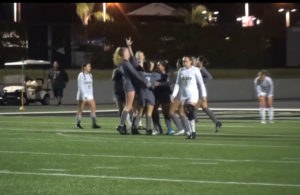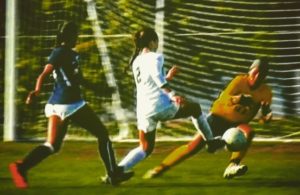- 2019/2020 Recap: Lady Scots Conquer First Round of CIF!
- 2019 Recap: Justin Flowe Wins the Dick Butkus Award
- Upland Lady Scots Have Their Revenge
- What is BBCOR?
- Tommy John, A Name To Be Feared
- The Game Plan
- Too Much Tackle?
- Is Cheer A Sport?
- Transgender Inclusion in Youth Sports
- Are You Counting Sheep Right?
College Recruits: Standing Out
- Updated: February 2, 2018
It’s a dream for many, but a reality for few.
It’s countless hours of hard work and dedication. It’s years of blood, sweat and tears. It’s leaving your heart and soul out on the field every single time you step out. All for the hopes of being noticed, and getting that chance to prove yourself as a college athlete.
But student-athletes getting recruited by their dream college is even harder than it sounds.
Per ScholarshipStats.com, only 1.9% of high school boys will play Division-1 level sports, and 2.3% of girls will achieve their dream of becoming D-1 scholarship athletes.
These odds can decrease even further depending on the popularity of the sport that a student athlete plays.
ScholarshipStats.com listed the number of U.S. high school players during the 2016-2017 season at 1,086,720. There are currently 15,167 student-athletes on the roster for NCAA Division 1 teams. Translation: the odds are most definitely not in your favor.
So how can an amateur athlete increase their chances of being recruited?
The first step is being realistic about the student’s athletic future, and deciding which college level division they’ll have the best shot of playing in.
“That’s probably most program’s first step,” Central Catholic football coach Steve Pyne said in an interview with the Oregonian. “I always tell my kids after their freshman year, if they have a desire to play in college they can have a sit down with me and their parents and have a realistic conversation about what it looks like. I don’t want to smash dreams, but I want people to be realistic about the difficulty to secure a scholarship.”
If Division l athletics is not likely in an athlete’s future, then it’s important to maintain an open mind. Plenty of schools have standout programs at the DIivison ll and Division lll level, and offer partial to full-ride athletic scholarships.
Having a solid GPA is an immediate draw to scouts, and can give an athlete an edge over their competition. A student-athlete needs to be a student first, and need to be able to get accepted into the university they’re being recruited by before they can be a part of the athletics program. A good GPA indicates that an amateur athlete is responsible, reliable and has good work ethic. All characteristics that make up a good athlete out on the field.
With competition to catch recruiter’s eyes being so fierce, don’t wait for scouts to seek you out. Putting together a highlight reel to send to coaches and universities is a way to get an athlete’s name and face out there, and showcase their abilities. Sending these reels out as early as their freshman year can help get the athlete on university’s radar. The key to a good reel is to keep it short and sweet, and leave the recruiter’s wanting to see more.
“This is one, if not the biggest, area that families screw up on. Kids make a video that is highlights from game-to-game and is way too long,” said Taylor Barton, director of Barton Football Academy in an interview with The Oregonian. “What they don’t understand is that these coaches are looking are looking at film every day and are getting sent hundreds of highlights every day. They are going to watch, at most, 10-to-12 plays. Put your very best play up front.”
Don’t be afraid to send these reels to coaches direct social media profiles. Many coaches use these forums to connect with players, and view potential recruits. That being said, make sure your social media account reflects the “job” that you are applying for. Inappropriate social media profiles are a deal breaker for many schools.
“It’s just insane what some of them think’s okay,” said David Cutcliffe, Duke’s head football coach in an interview with CBS News. “When I know it’s them and I read it and I see some of the things out there, if I’m on the road, I’ll call a coach- let his high school coach know we’re no longer interested. And I’ll call Kent McLeod or the people in the office and say I want him dropped off the database. No more mail. Nothing.”
Schools want athlete’s they know can be responsible, and represent their organization in a positive manner. In the technology era, many coaches feel an athlete’s social media is equally as important as their talent and academics.
“He’s got to have a GPA that I can relate to, an ACT or SAT score or a pre-ACT score, and the third box is social media,” said Arkansas coach Bret Bielema in an interview with CBS News.
The odds of playing Division 1 athletics are not on an amateur athlete’s side. However, acting the part and working to get your name on the map are key characteristics to standing out to college recruiters.
Copyright © 2023 KSNN. All rights reserved.








